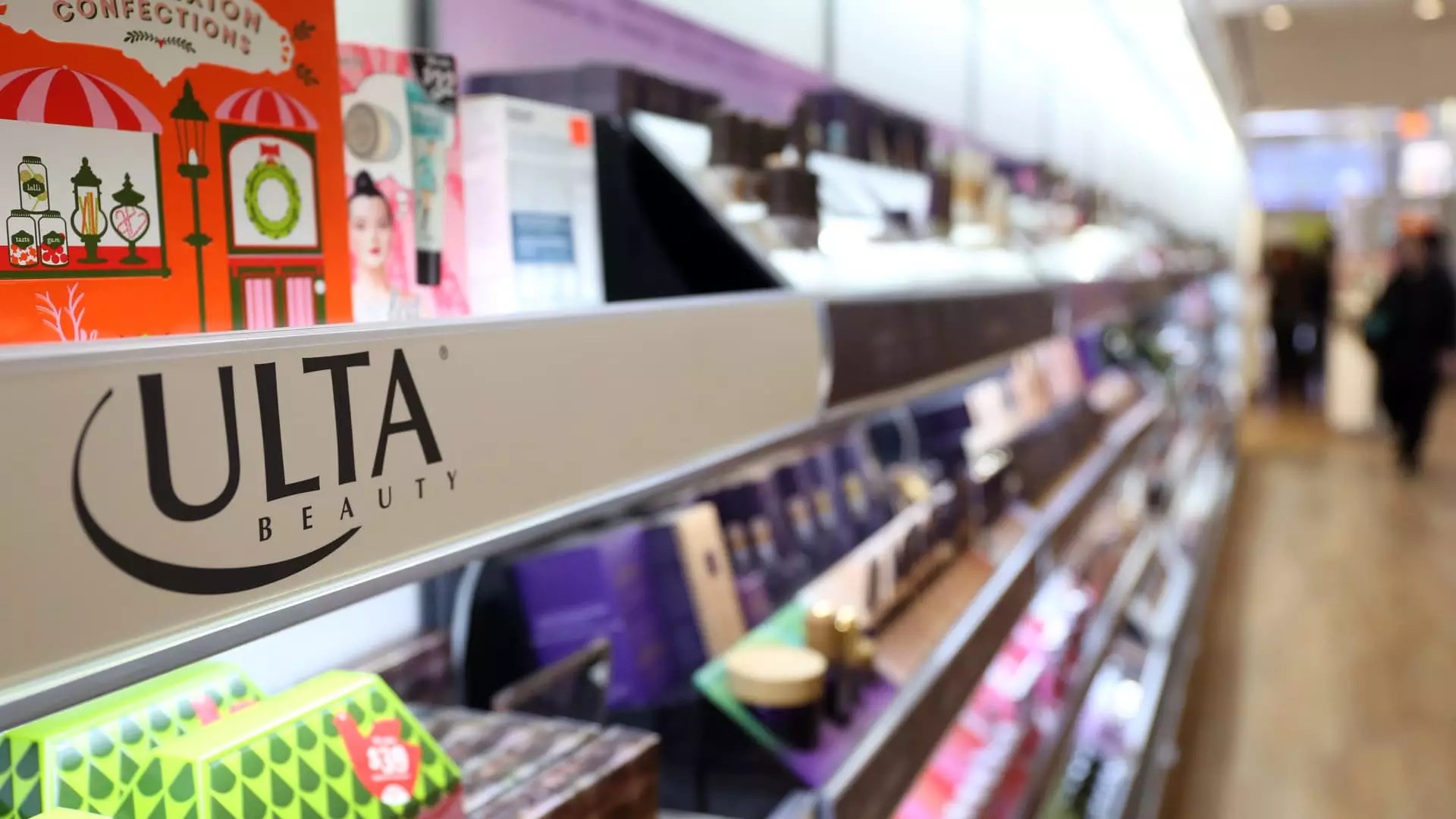The beauty industry is a dynamic and competitive landscape characterized by shifting consumer preferences and intense rivalry among brands. Recently, Ulta Beauty has showcased both resilience and adaptability despite concerns about declining demand and increasing competition. In this article, we will delve deeper into Ulta Beauty’s latest financial performance, its strategic responses to market challenges, and the implications for the future based on their third-quarter results.
Ulta Beauty recently announced its fiscal third-quarter results, revealing a performance that exceeded Wall Street’s forecasts. The retailer achieved earnings per share of $5.14, significantly above the anticipated $4.54, and reported revenues of $2.53 billion, surpassing predictions of $2.50 billion. This outstanding performance has allowed Ulta to slightly raise its full-year outlook, with net sales now expected to range from $11.1 billion to $11.2 billion, compared to the previous range of $11 billion to $11.2 billion. Additionally, the expectation for annual earnings surged to between $23.20 and $23.75 per share, up from the prior forecast of $22.60 to $23.50.
The comparable sales forecast indicates a potential decline of 1% to flat, but while this suggests some turbulence ahead, Ulta’s management remains optimistic. CEO Dave Kimbell expressed pride in the company’s progress and early signs of the effectiveness of their strategic initiatives. The company’s positive adjustment signifies not only resilience in a tough economic climate but also an ability to pivot and respond to evolving consumer trends.
Understanding Market Dynamics
The overall beauty sector has managed to hold steady even amidst broader economic pressures, such as inflation and shifts in consumer spending habits. This resilience has prompted several major retailers, including Target and Walmart, to broaden their beauty and skincare offerings. However, Ulta Beauty has shown signs of facing its own set of challenges. Earlier in the year, the retailer hinted at an impending slowdown by acknowledging cooling beauty demands, which initiated a ripple effect, ultimately leading to a missed earnings result in August for the first time in four years.
Stock performance further illustrates these challenges; Ulta’s shares have dropped approximately 19% year-to-date, contrasting with the S&P 500’s gains of about 28%. This dichotomy underscores the nuanced realities surrounding beauty retail—while one segment appears robust, specific players like Ulta must navigate increasing competition and changing consumer behaviors.
Despite the backdrop of heightened competition, Ulta Beauty’s recent results can be attributed to several innovative strategies. Kimbell emphasized the role of new brand launches and the development of digital tools in driving improved performance. Specifically, the company has begun to introduce exclusive product lines, such as a makeup range associated with the Universal film “Wicked,” which caters to both die-hard film fans and makeup enthusiasts.
Furthermore, the enhancement of online shopping features—like virtual try-ons and buying guides—has bolstered Ulta’s position in the e-commerce landscape. These digital tools not only facilitate a seamless shopping experience but also encourage consumer engagement. In-store events, such as workshops led by Ulta stylists, have provided an additional layer of service, drawing customers to physical locations and enriching their overall shopping experience.
As Ulta Beauty approaches the crucial holiday season, there are both opportunities and challenges on the horizon. Kimbell expressed cautious optimism about their performance through Cyber Monday, but there are clear concerns regarding the economic climate and consumer spending. The need for value-based offerings has become increasingly evident as economic pressures influence customer behavior.
Moreover, Ulta’s CFO, Paula Oyibo, highlighted the factors in the operating environment that could complicate sales performance, including the compressed holiday shopping season, which presents potential hurdles for the retailer. The concern is valid, given that reduced shopping days may lead to intensified competition among retailers aiming to capture consumer dollars during this pivotal period.
The latest developments at Ulta Beauty offer both insights and cautionary tales for stakeholders in the beauty retail sector. While the company has demonstrated resilience with its latest earnings report, the specter of declining consumer demand and rising competition remains a critical concern. By leveraging innovative strategies and staying attuned to market dynamics, Ulta has positioned itself to navigate these tumultuous waters. As we move forward, watching how Ulta adapts to ongoing changes within the beauty retail landscape will undoubtedly provide valuable lessons for the industry as a whole.


Leave a Reply